"The lesson of performance is of utmost importance: identity is not a straitjacket. In fact, we have a survival kit composed of a repertoire of multiple identities" (Guillermo Gómez-Peña, In defense of performance, 2001 in Chiara Mu, Paolo Martone (ed.), Performance art. Trajectories and international experiences, Castelvecchi, Rome, 2018, pp.184-185). These words, taken from a writing by the Mexican performance artist Guillermo Gómez-Peña (Mexico City, 1955), lend themselves well to questioning what is the value of certain manifestations attributable to thesphere of performance art, which takes place, again following Gómez-Peña, in the body, a place of creation, raw material and “container of mutant identities”(Ibid., p. 182).
The greatest exponent of the latter is undoubtedly Mireille Suzanne Francette Porte, the real name of the French artist known internationally under the pseudonym ORLAN (Saint-Étienne, 1947), written strictly in capital letters as the first gesture of breaking out of the mold and creating new identities. Active since the 1960s, ORLAN conducts her research directly on her body. It is no coincidence that one of the first series she made, through the photographic medium, is entitled Corps-sculptures (1964-67). These are black-and-white shots in which the artist, wearing only a mask to cover her face, immortalizes herself in unnatural poses and sometimes in the presence of mannequins (arms, legs, busts) that also seem to prelude future works, with the use of prosthetics and, as will be seen, today in an increasingly robotic direction. Parts of the body or reproductions of it also appear in other works and in some cases the viewer is called upon to interact with them: for example in the installation Têtes à claques, jeu de massacre (1977), a target shooting entirely composed, from the frame to the silhouettes to be hit, by ORLAN’s body images; or again in the performances entitled Se vendre sur les marchés en petits morceaux (1976-77) and in Le Baiser de l’Artiste (1977). In the first action, carried out in Caldas da Rainha in Portugal, the artist sets up a stall at the market and sells, according to a price list and as indicated by special and unequivocal signs, her body, reproduced and displayed, guaranteed and without dyes or preservatives. The question that accompanies the operation is “Does my body really belong to me?” (“Est-ce que mon corps m’appartient reellement?”).

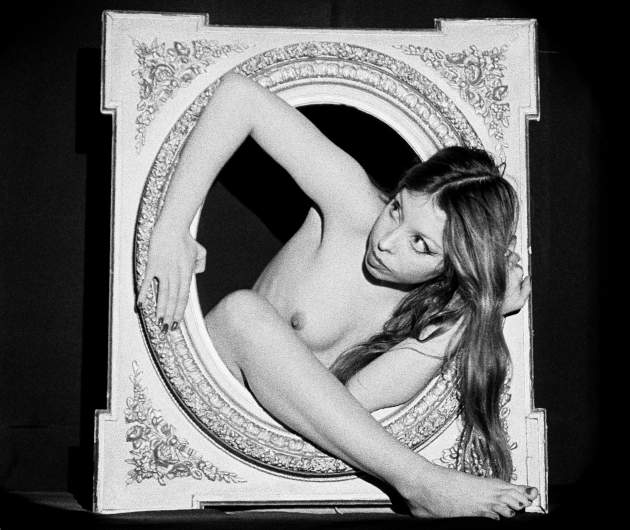



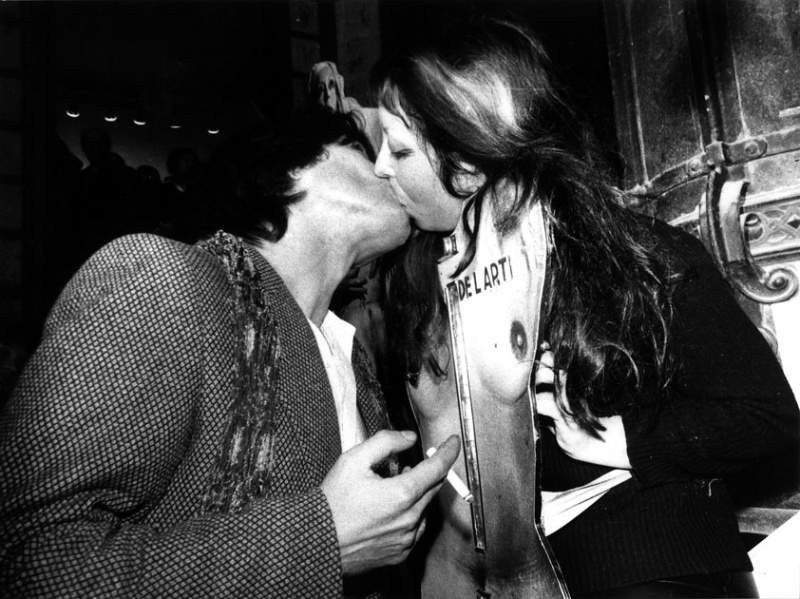
The better-known performance Le Baiser de l’Artiste, on the other hand, is presented in Paris at the fourth edition of the International Fair of Contemporary Art (FIAC). Here the artist, hidden behind a kind of armor depicting her own body, kisses anyone who inserts five francs inside the slot. The work is also composed in the form of a sculpture where the armor later worn by ORLAN is flanked on one side, and the image of the artist as the Virgin on the other. To the religious sphere, in a feminist key and to counter a binary vision between Mary, the saint, and Mary Magdalene, the prostitute, is also referred to Strip-tease occasionnel à l’aide des draps du trousseau (1974-75) in which ORLAN, goes from showing herself as a Baroque Madonna, richly adorned with drapes, to presenting herself naked, until she disappears.
ORLAN is mainly remembered for some particularly shocking performances dating back to the 1990s. Gathered all under the title The Reincarnation of Saint ORLAN or Image/New Image (1990-93), the actions see the artist voluntarily undergo cosmetic surgery sessions, for which she sets up real photographic sets in order to document and sometimes broadcast the event live via satellite. Questioned with respect to this practice, the artist reveals her desire to sculpt herself, to construct a new image that breaks the dogma of the body as something innate or immutable and erases all stereotypes about beauty. The prostheses usually installed on the cheekbones and placed instead at the height of the artist’s temples are proof of this. This desire to overcome one’s own body appears in ORLAN early on. Indeed, surgical interventions can be traced on the artist’s site dating back as early as the late 1970s: see in this regard the photographic documentation of Ouverture de corps sous anesthésie (1979). These are some of the moments that most marked ORLAN’s career, definitively consecrated and consigned to art history. It is necessary, at this point, to explore the cultural temperament of the decades that ORLAN spanned in order to understand his trajectory. On the one hand, in the 1960s, the current in which her work best seems to be inscribed is that of Body art, which puts the artist’s own body at the center of the work; on the other hand, in the performances of the 1990s, ORLAN, who also does not participate in the famous Post Human exhibition (1992-93), curated by Jeffrey Deitch, seems to want to present a new kind of humanity, a new perception of the self and also of art.
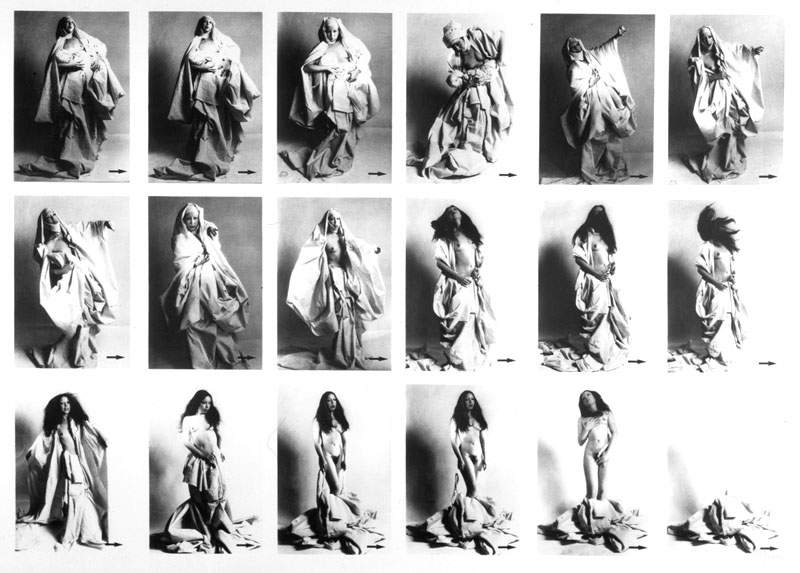

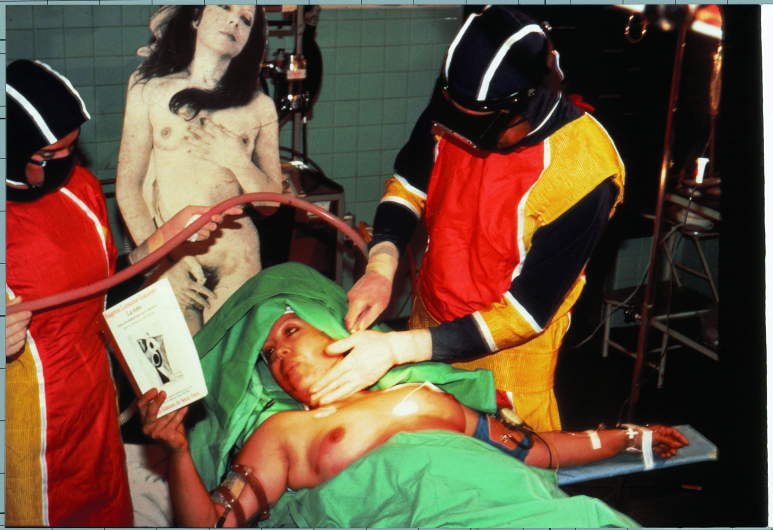
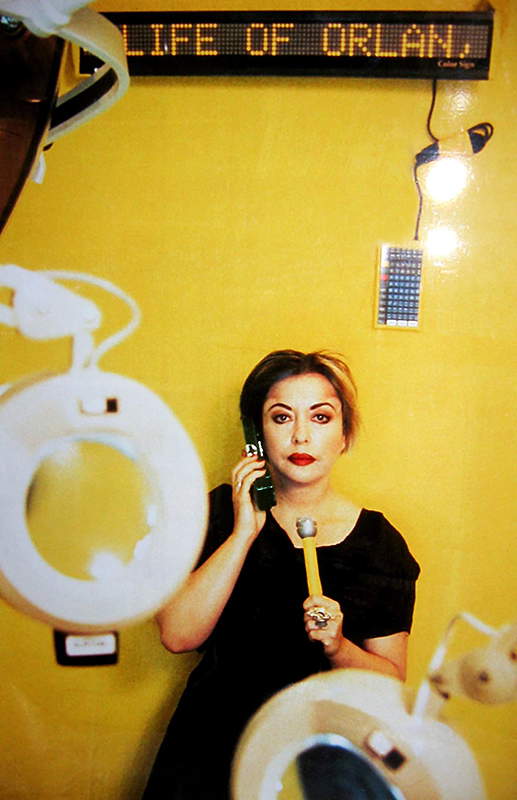
Precisely because of this, the artist, always immersed in her time but autonomous from other movements and trends, drafted a manifesto of her art in 1989: Art charnel (carnal art). Here ORLAN programmatically defines the boundaries of her art, not forgetting to highlight the differences with coeval and partly related art movements. Carnal art, the artist writes in the very first lines, is “a self-portrait in the classical sense but realized by means of today’s technology. It oscillates between defiguration and refiguration. Its inscription in the flesh is due to the new possibilities inherent in our age. The body has become a ”modified ready-made,“ no longer seen as the ideal it once represented, not ready enough to be respected and signed” (ORLAN, L’art charnel, 1989, available at http://www.orlan.eu/bibliography/carnal-art/). ORLAN is limpid in her intentions and also in identifying a classic genre, that of the portrait or rather the self-portrait, in which to inscribe each of her interventions.
But if in the past “defiguration” or “refiguration” in painting had acted on the portrayed person by superimposing symbolic, allegorical and mythological meanings on him, now ORLAN resorts to technology to shape his identity. The artist in his extreme performances relies completely on science, opposing the concept of pain employed in martyrdom in the Christian tradition or in Body Art itself as a source of purification and resorting to local anesthesia. Among other themes made explicit in the manifesto, ORLAN points out that carnal art loves the categories of the grotesque and baroque; it is feminist and nonconformist, against all canons of beauty and imposed rules. In this direction go the various Défiguration-Refiguration series , Self-hybridations précolombiennes (1998), Self-hybridations Africaines (2000-2003) and Self-hybridations Amérindiennes (2005-2008) in which theartist also explores the concept of identity in non-Western cultures, superimposing on her own image those of pre-Columbian or African icons and pursuing a reflection around the social and cultural pressures that insist on the body.
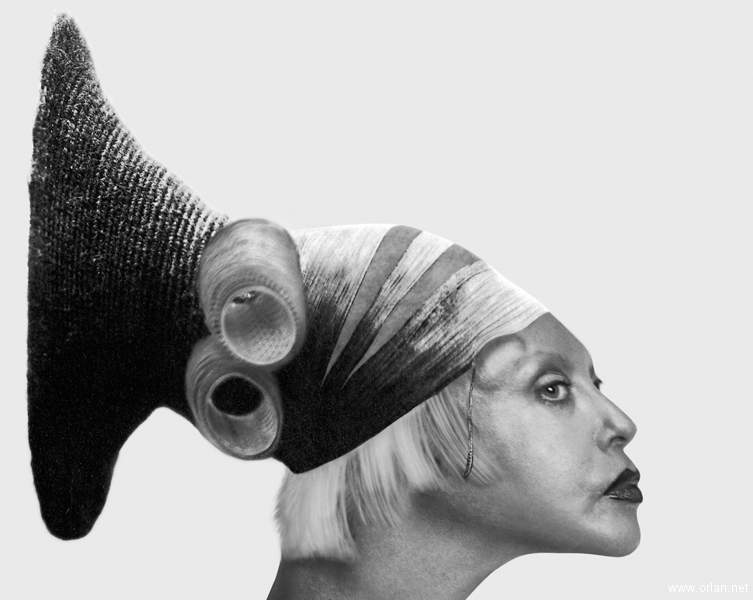
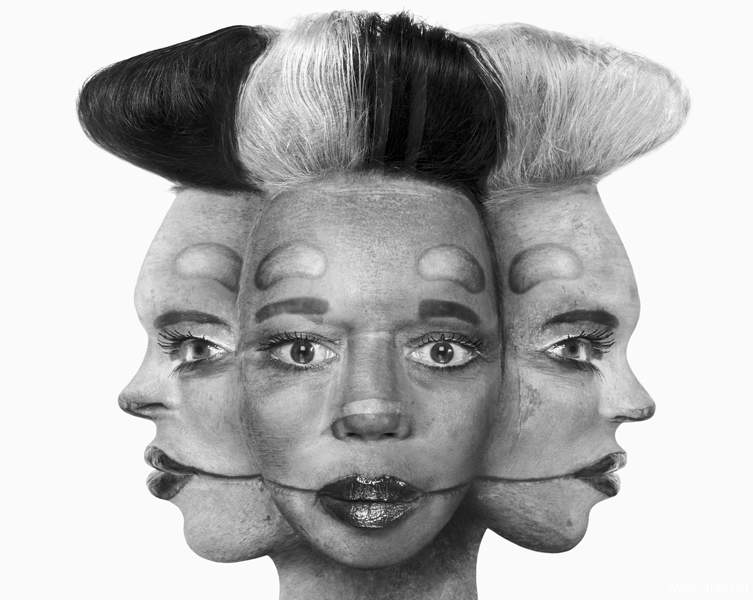
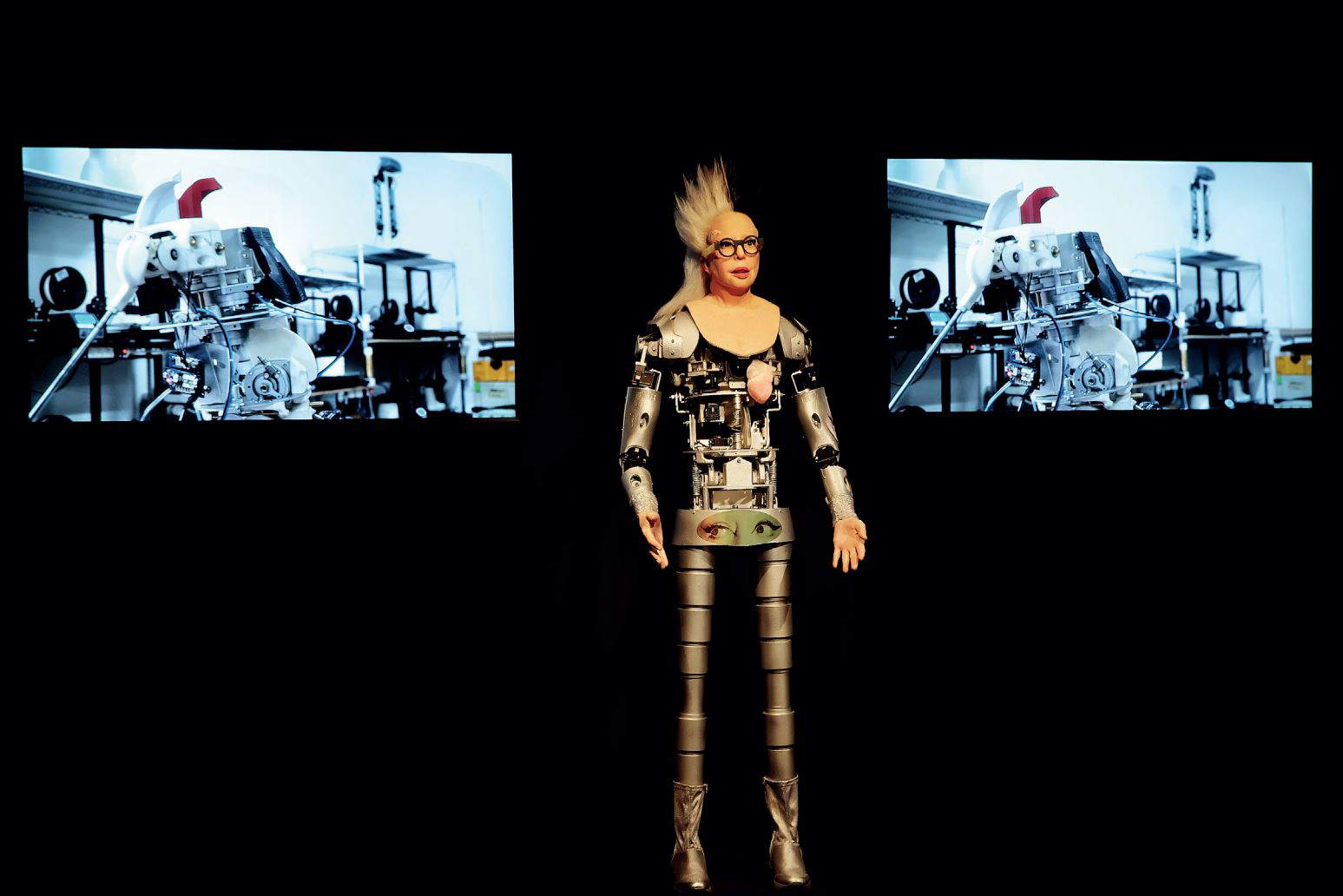
Carnal art is also concerned with developments in medicine and biology that question the state of the body, posing unprecedented ethical issues related to augmented reality, artificial intelligence, and robotics. Thus it is that, having historicized the actions of the 1990s, we find ORLAN among the artists involved in the 2018 Artistes&Robot exhibition at the Grand Palais in Paris. Here is presented ORLAN-OÏDE (2018), a humanoid robot that echoes, at least in its face, the features of ORLAN. For the robotic sculpture to constitute in effect its alter ego, the artist recorded more than 22,000 words, donating his voice, as well as his face, to the artificial intelligence that is for all intents and purposes able to interact with the viewer and entertains, via two screens installed nearby, conversations with ORLAN. Just a year before transferring part of himself to the robot, the artist launches a singular petition: Pétition Contre la Mort (2017). The appeal is addressed to everyone, since no one has ever been asked with respect to whether or not they want to die. This collection of signatures, which is still active on the Orlan.eu website, shows one of the latest landfalls in the artist’s thinking, which, after having constituted “a robotic twin,” approaches a transhumanist vision, opposing, surely also ironically, the idea of death.
From the overview just sketched, it is evident how ORLAN’s work, in a research that is almost 60 years old, continues to insist on the great theme of hybridization and nomadic identities. From the 1960s to the 1920s, ORLAN never ceases to surprise, changing his appearance, making use of the most advanced technologies, and affirming, in each case, the freedom of the artist and his body.
Warning: the translation into English of the original Italian article was created using automatic tools. We undertake to review all articles, but we do not guarantee the total absence of inaccuracies in the translation due to the program. You can find the original by clicking on the ITA button. If you find any mistake,please contact us.